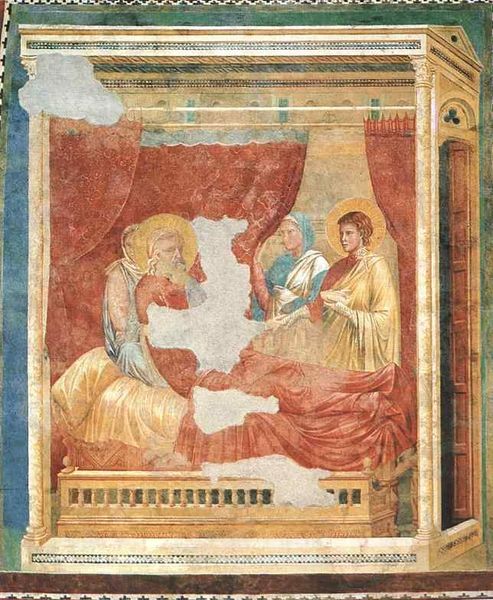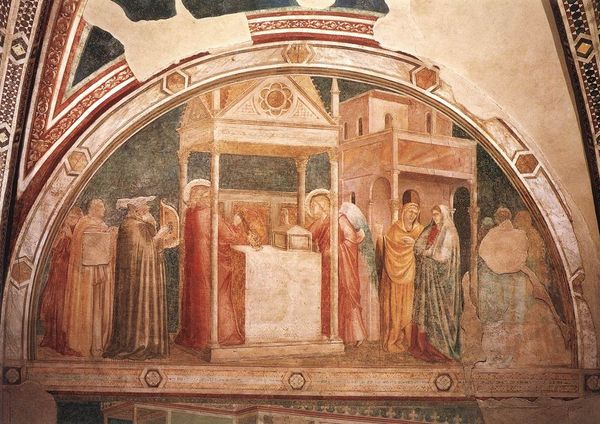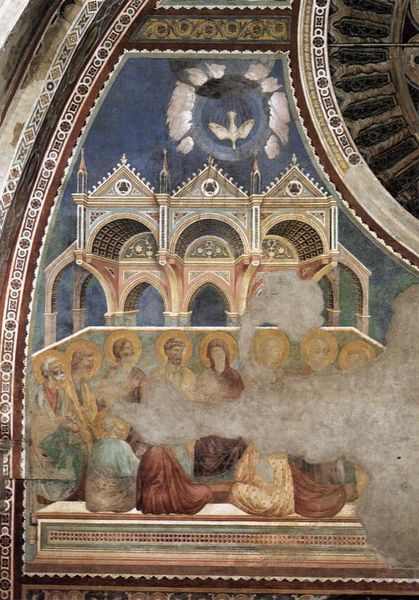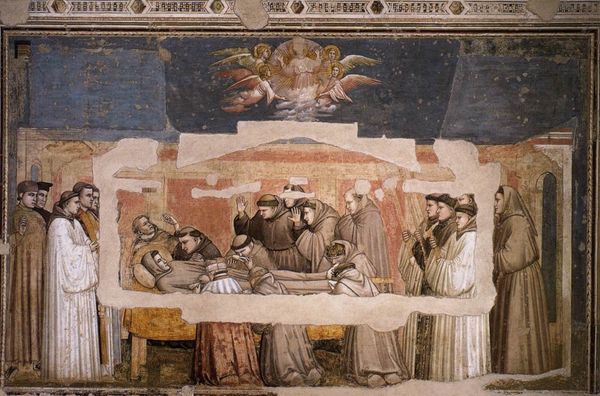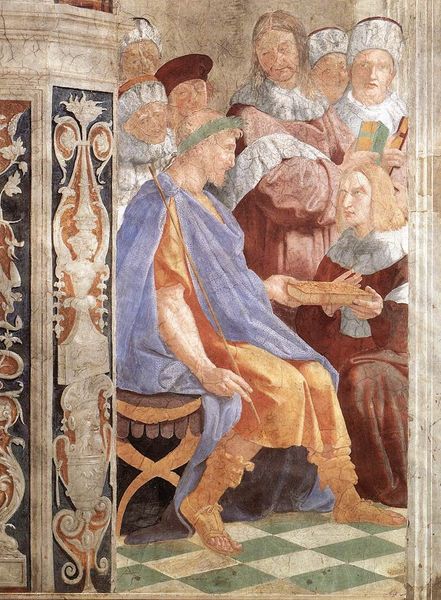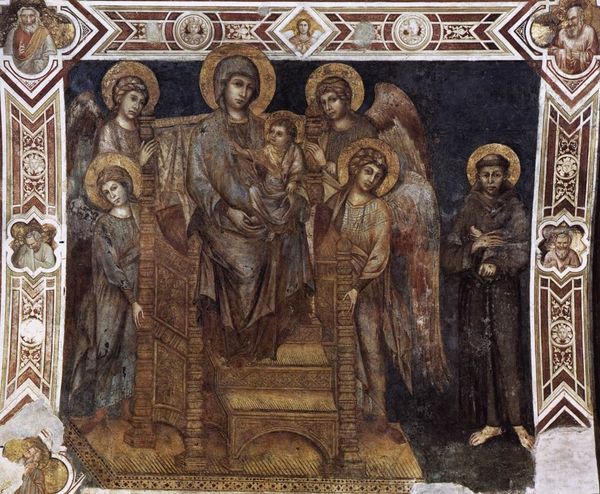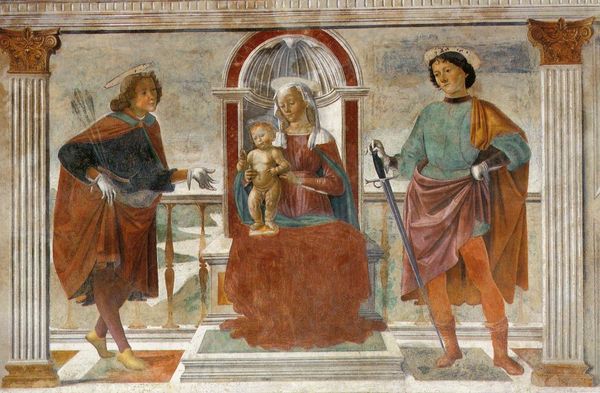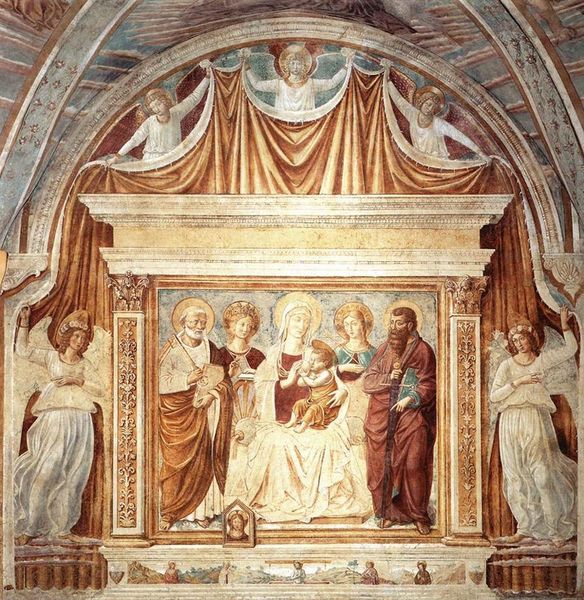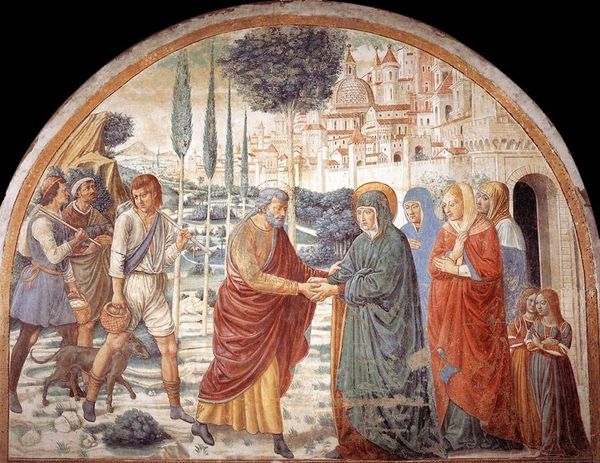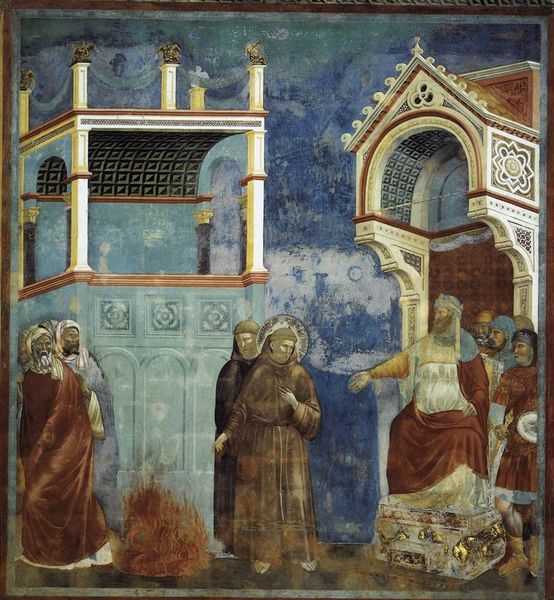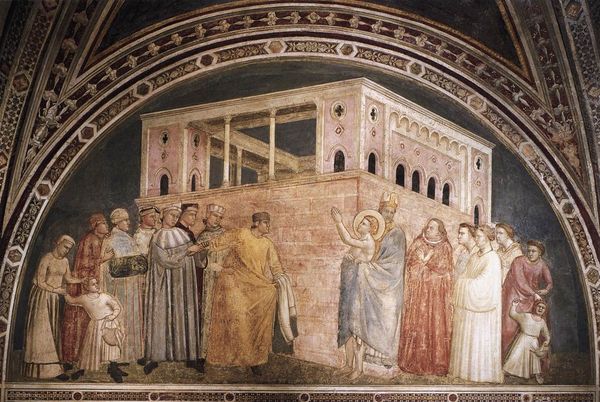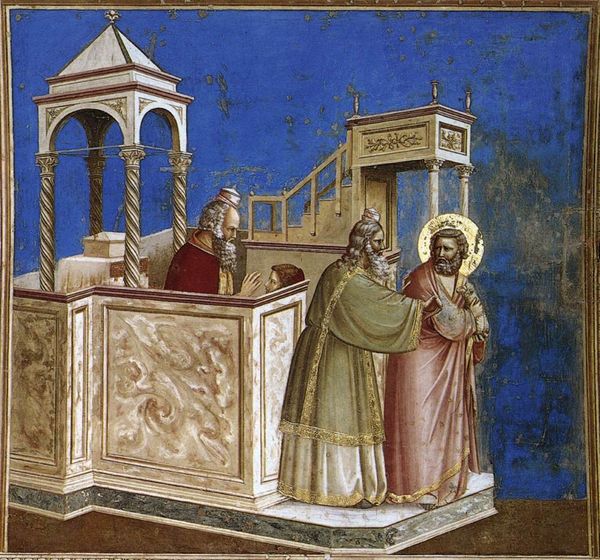
fresco
#
portrait
#
medieval
#
narrative-art
#
holy-places
#
figuration
#
fresco
#
christianity
#
men
#
history-painting
#
italian-renaissance
Copyright: Public domain
Editor: This fresco, "Isaac Rejecting Esau," was painted around 1290 by Giotto and resides in the Basilica of Saint Francis of Assisi. I’m immediately struck by the composition. There's something very theatrical about it, especially the way the figures are arranged like actors on a stage. How do you interpret the symbolism present in this scene? Curator: What do you notice about Isaac himself? The halo, of course, immediately identifies him as sacred. He is presented, dying or infirm, but radiating an aura, the sacred knowledge. Now look at the figures surrounding him; who is offering the plate and who waits anxiously behind? Editor: The figure offering food to Isaac is probably Jacob. I would assume that the female figure would be Rebecca who clearly favours Jacob. The food seems central to the scene - like an offering? Curator: It is more than just food: consider it as symbolic sustenance, material, spiritual, a kind of transubstantiation of divine favour. The ‘stage’ here becomes a potent symbol – the familial, the divine and cultural memory, the very basis of continuity itself. Don’t you think? What do you see when you consider that point? Editor: Thinking about the familial stage gives the scene additional layers. Jacob’s deceit becomes not just a personal act, but a performance within a lineage, a crucial scene for the family's and the larger story. The plate seems not as just food anymore, it now feels freighted with consequences, loaded. Curator: Precisely. Each element acts as a marker, triggering cultural and emotional memories linked to this narrative. I am glad to see how well you understand this perspective of symbolism in this painting!
Comments
No comments
Be the first to comment and join the conversation on the ultimate creative platform.
